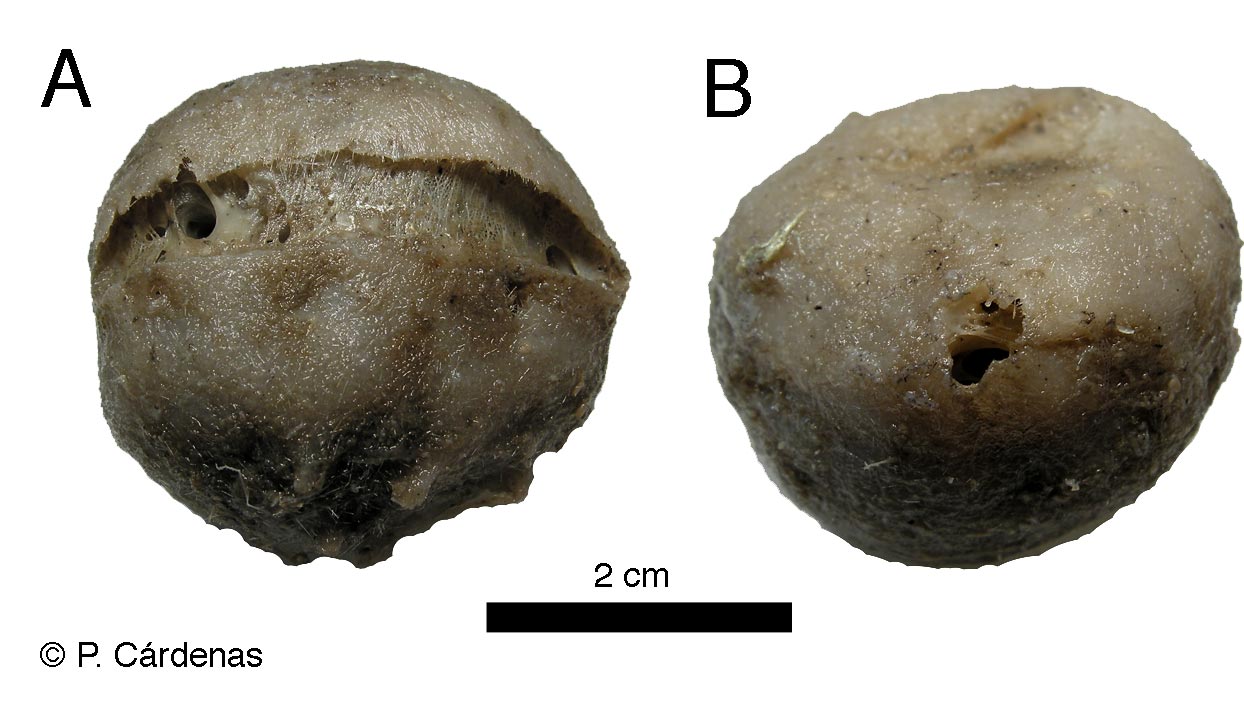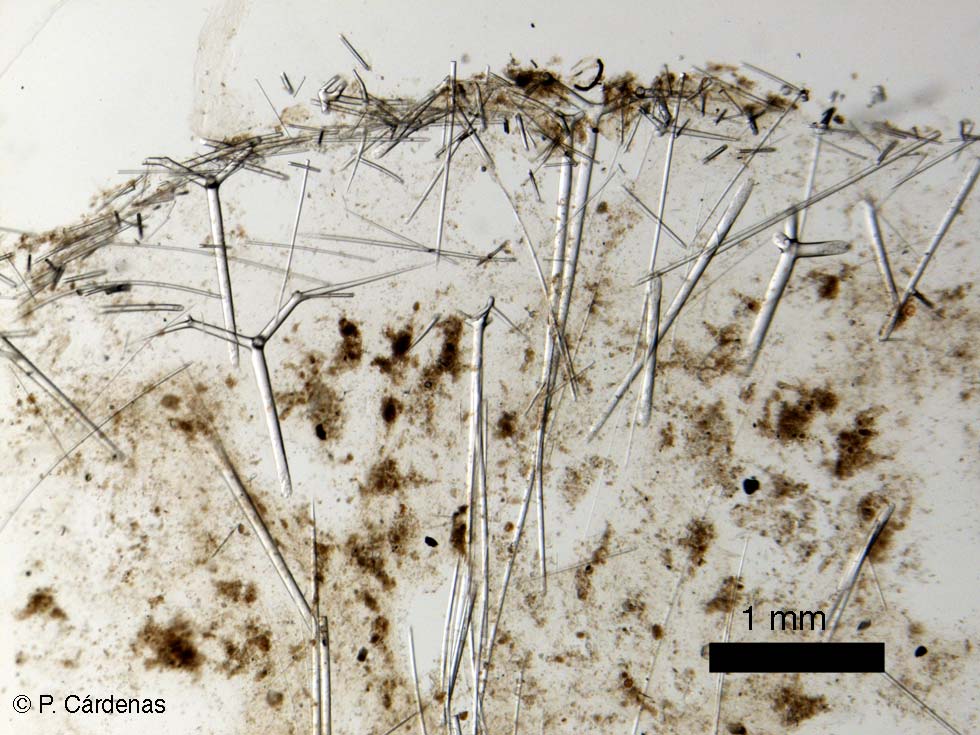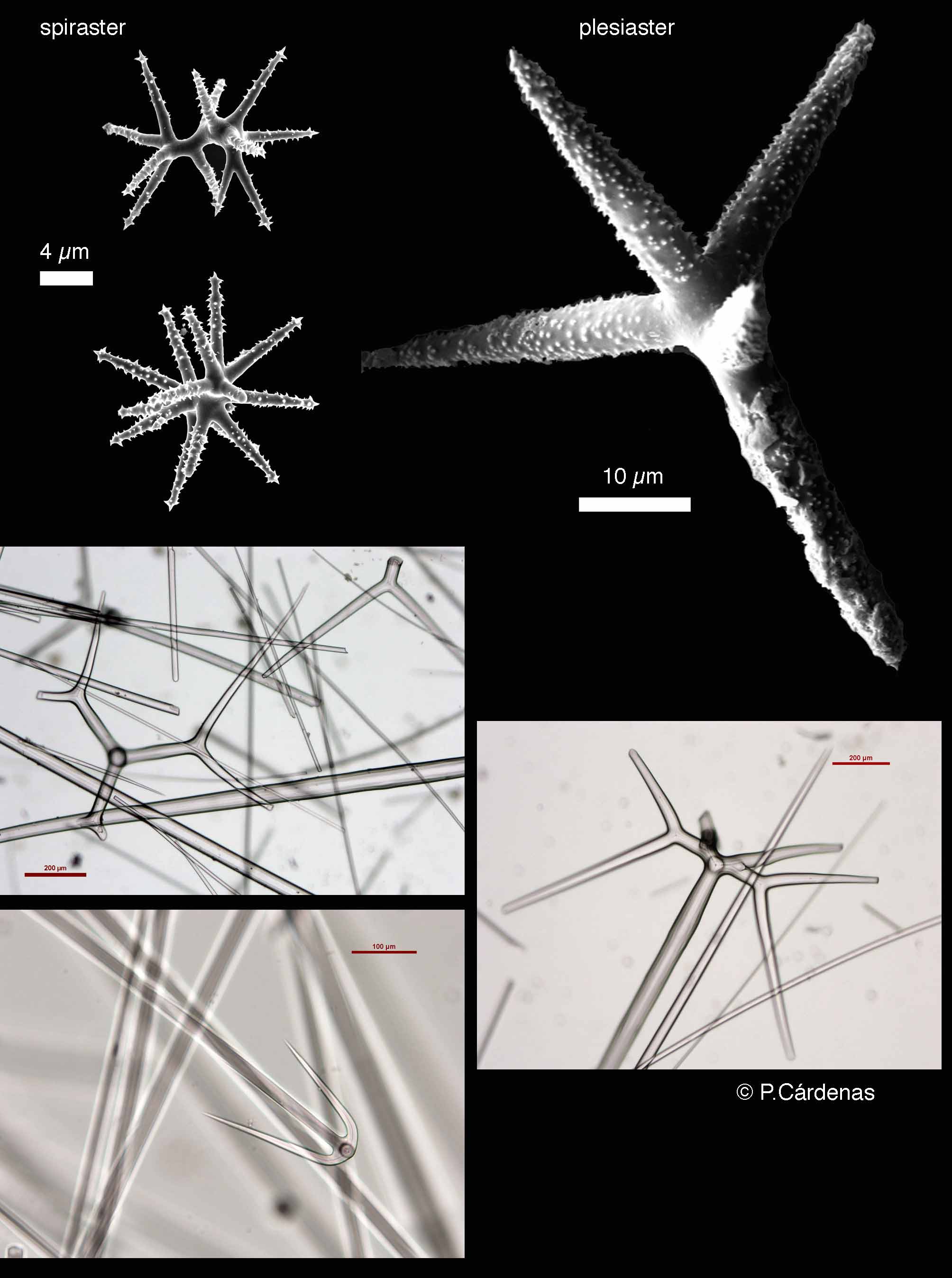Morphological description (show/hide)
| massive, sub-spherical | | brown | | brown | | situated on top, with a sieve. | | not compressible | | slightly hispid | | Triaenes are found only at the surface, either crossing the ectosome or supporting it. Oxeas, spirasters and plesiasters can be found throughout the choanosome. | | Spirasters are abundant in the ectosome. | | (a) oxeas, slightly bent, length: 4-10 mm; width: 20-48.1-70 µm (N=8). (b) dichotriaenes, rhabdome is with a single bend, more rarely flexuous, most rhabdomes have a swelling just below the cladome, rhabdome length: 620-3933.7-5075 µm (N=8); width: 23-58.1-90 µm; many irregular cladomes, protoclad length: 75-236.8-350 µm; deuteroclad length: 125-600.2-1175 µm. (c) anatriaenes, rare, rhabdome straight or bent, length: 4000-4125 µm (N=2); rhabdome width: 15-20 µm; bent clads (similar to T. muricata anatriaenes), clad length: 170-220 µm. (d) protriaenes, not observed in this specimen. | | (e) spirasters (and rare metasters) (Fig. 18H), spined, length: 11-18.2-27.5 µm. (f) plesiasters (Fig. 18G), few, 4-6 actines, faintly spined, actine length: 18.5-41.4-75 µm, actine width: 3-7.4-12.5 µm (N=23). |
|
Reference (show/hide)
| Cárdenas, P., Xavier, J.R., Reveillaud, J., Schander, C. & Rapp, H.T. (2011) Molecular phylogeny of the Astrophorida (Porifera, Demospongiae) reveals an unexpected high level of spicule homoplasy. PLoS ONE, 6, e18318. |
|





